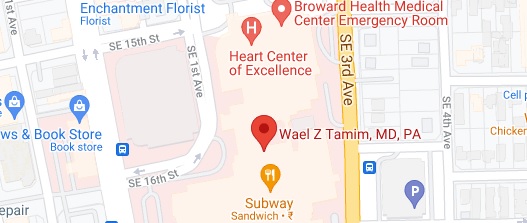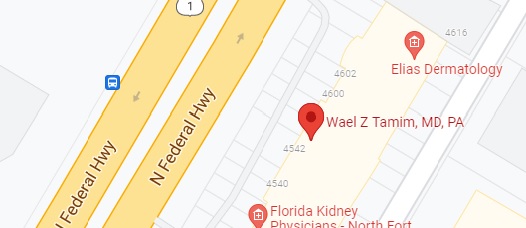
What is a Popliteal Aneurysm?
The popliteal artery, located behind the knee, supplies oxygen-rich blood to the thigh, calf and knee joint. Atherosclerosis (hardened walls of an artery due to buildup of fats and cholesterol) or trauma to the popliteal artery can lead to a condition called popliteal aneurysm. Popliteal aneurysms are the most common type of peripheral aneurysm (aneurysm in arteries other than the aorta), causing the wall of the popliteal artery to weaken and bulge out. Popliteal aneurysms may not cause any symptoms or you may experience symptoms such as edema (swelling) in the lower leg, pain at the back of your knee, foot pain, and non-healing skin ulcers on the lower legs and feet.
What are the Risks Associated with a Popliteal Aneurysm?
Blood clot formation is a risk associated with aneurysms and can be life-threatening by blocking blood flow to the limbs or brain. If gangrene results from severe blockage in the extremity, an amputation may be necessary, although this is very rare. There is also a risk the aneurysm may continue to enlarge with progressive weakening of the walls of the artery and although rare, eventually rupture. This in turn can lead to uncontrolled bleeding, which is a life-threatening situation.
What is a Popliteal Aneurysm Repair?
Popliteal aneurysms can be treated by two methods: open surgical repair, in which a bypass is created around the aneurysm for improving the flow of blood; or endovascular popliteal aneurysm repair, whereby a stent-graft (a tube made of fabric with metal mesh) is inserted into the area of the aneurysm to support the bulged artery.
Your surgeon will recommend the best option for your condition depending on the size of the aneurysm, status of your overall health and condition of the arteries. The surgeries are performed under regional or general anesthesia.
Open surgery: This procedure involves making an incision behind your knee to reach the aneurysm. Your surgeon bypasses the aneurysm by suturing the ends of a vein graft (healthy vein from another part of the body) or a prosthetic (artificial tube) graft above and below the affected area. During the procedure, the aneurysm sac is opened to remove the blood clot and sutured together to prevent a recurrence. This also releases the surrounding blood vessels from being compressed by the aneurysm.
Endovascular repair: This is a minimally invasive procedure that involves inserting a catheter (long flexible tube) over a guidewire, into the artery of the groin and guiding it to the aneurysm. Your surgeon may administer medications through the catheter to dissolve any blood clots. A stent-graft is then inserted through the catheter and expanded inside the artery at the location of the aneurysm. This procedure prevents an aneurysm rupture and the risk of blood clots and blockage of the artery.
What can you Expect after Aneurysm Repair?
Depending on the type of repair performed, you may have a short hospital stay of 2 to 3 days with a quick recovery after endovascular repair; or a longer hospital stay of 7 to 10 days with open surgery. Keep the incision clean and dry and avoid driving and lifting heavy weights for a few weeks after the repair. Follow-up imaging tests may be ordered to ensure the proper functioning of the stent in endovascular repair and proper functioning of the graft in open surgery.
Are there any Complications after the Aneurysm Repair?
As with any surgery, open and endovascular popliteal aneurysm repair may involve certain risks and complications. They include:
- Blood leakage around the graft
- Infection
- Blocked blood flow within the graft
- Graft migration
What are the Advantages of Endovascular Repair over Open Surgical Repair?
Endovascular repair is a less invasive treatment option that involves a shorter hospital stay and faster recovery when compared to open surgical repair.
Related Topics:
- Minimally Invasive Heart Surgery
- Atrial Fibrillation Corrective Surgery
- Percutaneous Mitral Valve Repair
- Removal of Masses or Tumors from the Heart
- Aortic Dissection
- Coronary Artery Bypass Grafting
- Aortic Valve Disease
- Aortic Stenosis
- Transcatheter Aortic Valve Replacement - TAVR
- Mitral and Aortic Valve Repair and Replacement
- Tricuspid Valve Disease
- Valvular Surgery


